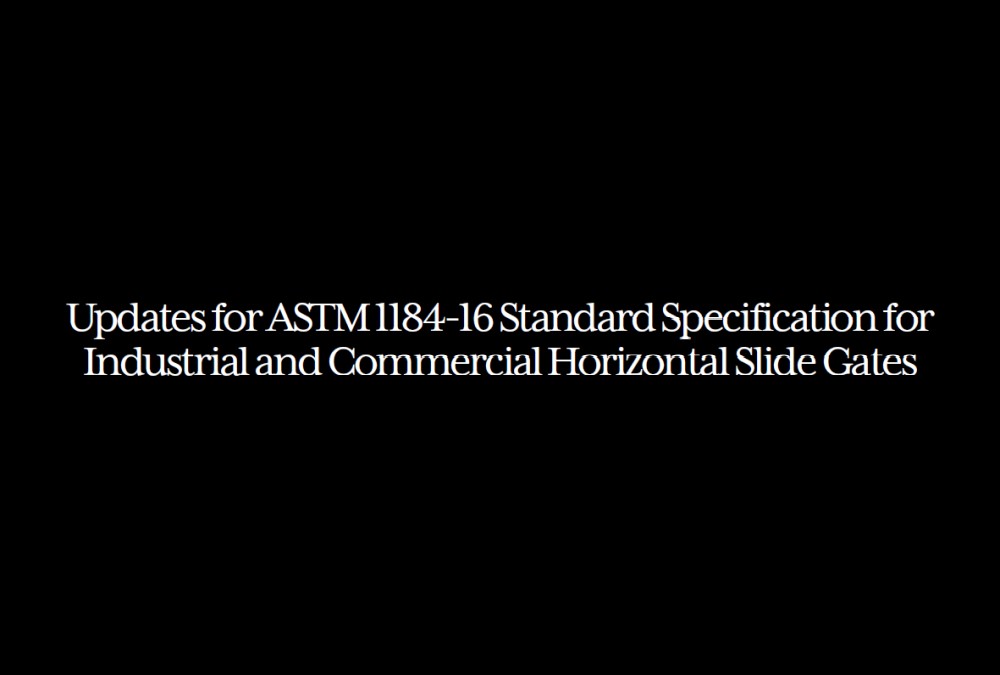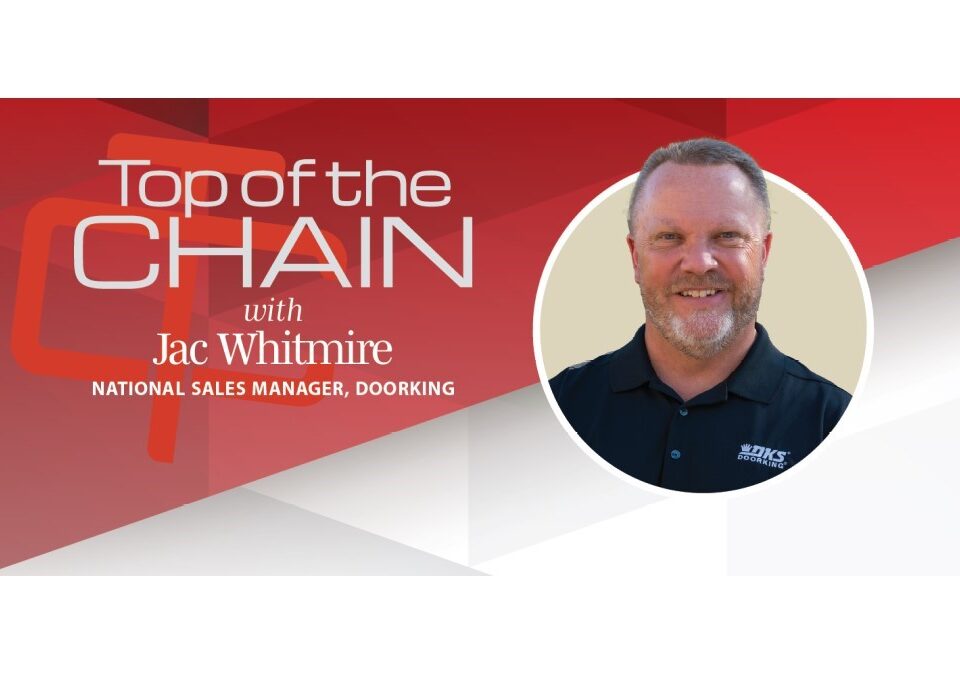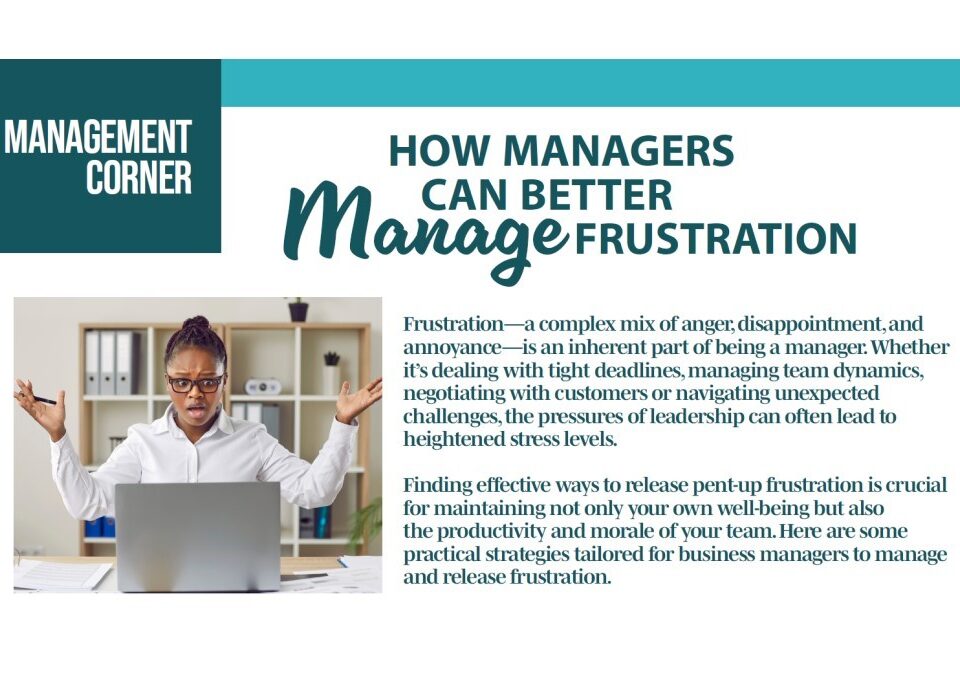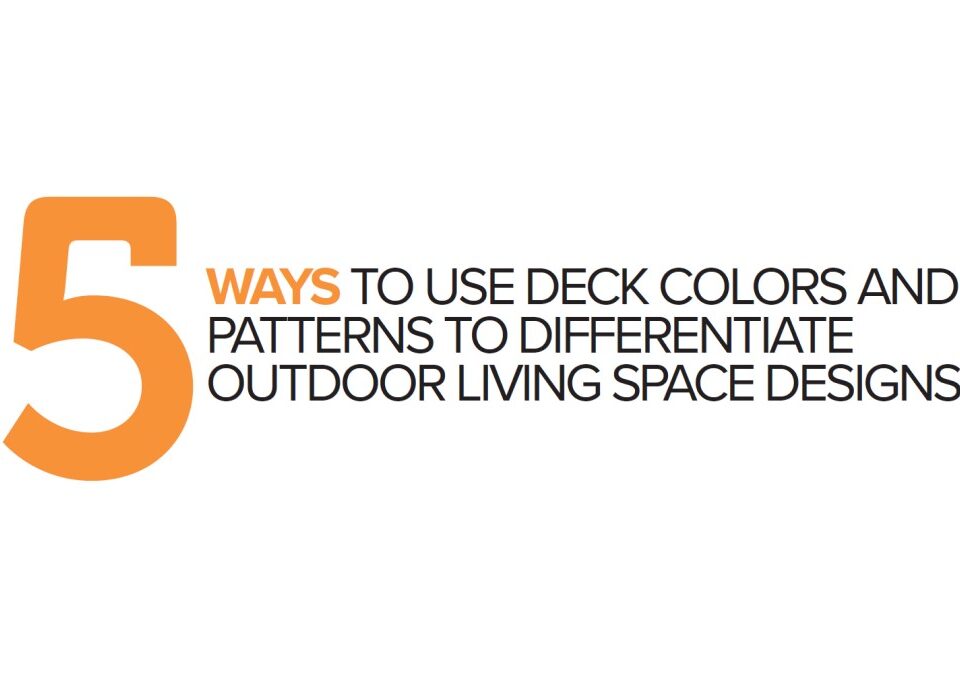
Standard Specification for Polyvinyl Chloride (PVC), Polyolefin and Other Polymer-Coated Steel Chain Link Fence Fabric
November 29, 2023
Top of the Chain with Alix Glodich
December 28, 2023Updates for ASTM 1184-16 Standard Specification for
Industrial and Commercial Horizontal Slide Gates
Most fence professionals are not aware of the work being done by ASTM and others such as Underwriters Laboratory (UL) to enhance the safety and protection for the industry. Unfortunately, tragedies and fatalities happen often in our industry. ASTM F2220 and UL325 standards were written to provide safety and protection for all gates that are automated.
But what about manual gate installations? “ASTM 1184-16 is the standard specification for industrial and commercial horizontal gates and has always been part of the fence standards, but now has been enhanced to provide more focus on fall over protection,” explains Tony Thornton, president and founder of Fence Consulting Group. “We see manual slide gates like overhead, v-groove, roll and cantilever gates that are not automated, and as an industry we haven’t taken the necessary requirements to protect these gates from fall over, but with the updates on 1184-16, we are now required to do so, regardless of manual or automated.”
Automated gates aren’t the only risk of danger, manual gates require a focus on safety as well. “Our industry has placed so much emphasis on F2200 and UL325 for automated gates we didn’t place the same focus on manual gates,” Thornton says. “As more studies and research has been done, our industry has seen an increase in manual gate injuries and fatalities and hopefully the updated 1184 standard will help curb these.”
The only way to increase awareness is through awareness and education for both manual and automated gate installations. Is your company doing enough to educate yourself, your team and the consumers?
“As an industry, we have worked diligently to educate, but the industry professionals have taken a lack luster attitude towards adopting the standards as a company practice. When are you going to start?” he asks.
ASTM F1184-16 was adopted by committee on October 13, 2022, and the revisions for the classification and requirements is now better defined.
CLASSIFICATION
4.1.1 Type I – Overhead Slide – Any horizontal slide gate supported only from above.
4.1.2 Type II – Cantilever Gate – Any horizontal slide gate spanning as opening lacking a top or bottom support within that opening. Type II
gates shall be supplied in one of two classes.
• 4.1.2.1 Class I – Steel frame gates and aluminum frame gates using external rollers.
• 4.1.2.2 Class II – Steel frame gates and aluminum frame gates using internal rollers.
4.1.3 Type III- Rolling gate- Any horizontal slide gate that requires support on grade to traverse the gate opening. Type III gates shall be supplied with one of two classes.
• 4.1.3.1 Class I – Steel frame gates and aluminum frame gates using an on-grade track support and guide the entire gate.
• 4.1.3.2 Class II – Steel frame gates and aluminum frame gates using a supporting pipe track at the trailing edge and an on-guide roller support at the leading edge of the gate.
GENERAL REQUIREMENTS
- Gates shall be designed, constructed, and installed to not fall over more than 45 degrees from the vertical plane, when a gate is detached from the supporting hardware.
- Positive stops shall be required to limit travel to the designed fully open and fully closed positions. These stops shall be installed at either the top of the gate, or at the bottom of the gate where such stops shall horizontally or vertically project no more than is required to perform their intended function.
- All weight bearing exposed rollers 8 ft (2.44 m), or less, above grade shall be guarded or covered.
- A gap, measured in the horizontal plane parallel to the roadway, between a fixed stationary object nearest the roadway (such as a gate support post) and the gate frame when the gate is in either the fully open position or the fully closed position, shall not exceed 2 1⁄4 in. (57 mm).
Exception: All other fixed stationary objects greater than 16 in. (406 mm) from the gate frame shall not be required to comply with this section. - All gates shall be designed with sufficient lateral stability to assure that the gate will enter a receiver guide.
5.1 Single Panel: Receiver guides shall be recessed behind the leading edge of the receiver post or fixed object. Exception: Receiver guides mounted greater than 8 ft (2.44 m) above grade shall not be required to comply with this section.
5.2 Dual Panels: Receiver guides, if used, may be installed on either panel, and shall include a cross-sectional area of 9 in.2 (5806 mm2) or greater as measured on the leading edge of each guide. - Gates shall be designed, constructed, and installed such that their movement shall not be initiated by gravity and shall not result in continuous, unimpeded movement in either linear direction of it travel.




